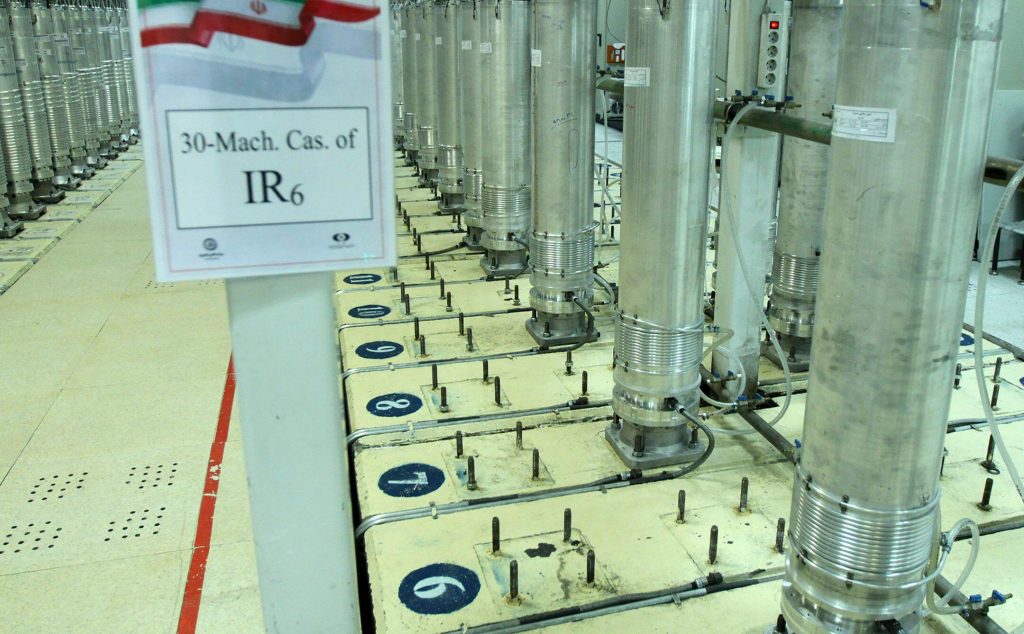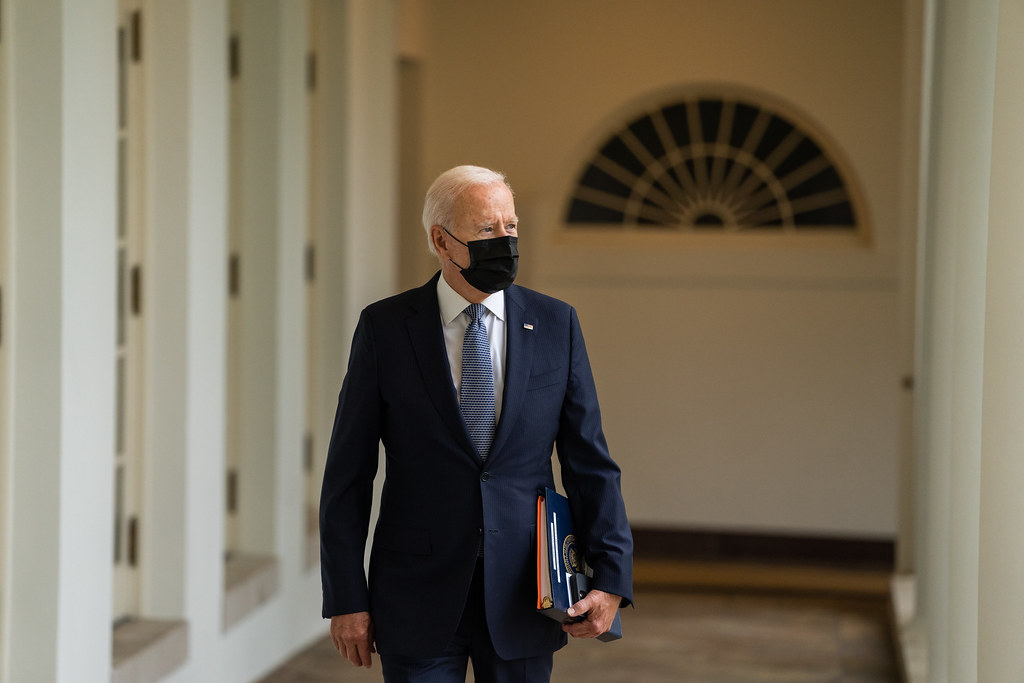Australia/Israel Review
A Disastrous Deal?
Feb 28, 2022 | Andrea Stricker

Any JCPOA replacement will be weaker
One of the top selling points of the 2015 nuclear deal with Iran was that it was supposed to keep the Teheran regime at least 12 months away from having enough fissile material for a nuclear weapon. That interval is known as Iran’s “breakout time.”
The Biden Administration has spent months trying to coax Teheran back into the 2015 deal – formally known as the Joint Comprehensive Plan of Action (JCPOA) – but senior US officials now acknowledge that they cannot secure an agreement that pushes Iran’s breakout time back up to 12 months. During talks in Vienna, the Biden Administration reportedly expects to negotiate a breakout time of only six to nine months. The Israeli Government estimates an even shorter interval – four to six months.
What this means is that US President Joe Biden cannot bring back the JCPOA. He can bring back only a weaker deal – a JCPOA-minus – with all the flaws and loopholes of the original, but with even fewer and more transient restrictions on the Iranian nuclear program. And while the United States and its partners get less, the Islamic Republic is likely to get even more sanctions relief than the first time around.
Delaying Iran’s breakout time is so important because, in the event of a crisis, the United States and its allies will need as much time as possible to persuade Iran that making a dash for nuclear weapons is too risky. While diplomacy is underway, Washington and its partners will also have to gather intelligence and – potentially – prepare for military strikes, so Teheran understands the price of defiance.
Why can’t a revised JCPOA push Iran’s breakout time back up to 12 months? The answer revolves around gas centrifuges, the machines integral to the process of enriching uranium. Iran’s centrifuges have continually grown in number and capability. The JCPOA did not stop this advance, and the Iranian regime has ruled out accepting additional restrictions.
Prior to the JCPOA, the breakout time was a matter of weeks. The JCPOA temporarily increased Iran’s breakout time by limiting the size of its stockpile of enriched uranium and constraining the purity level of uranium the regime could produce. The deal also put temporary restrictions on the regime’s use of faster centrifuges – initially, Teheran could only use its slowest model, the IR-1. Since the clerical regime began openly violating the accord in mid-2019, its breakout time has dropped back to a similar range.
Iran was able to reduce its breakout time so quickly because the JCPOA did not force it to discard or destroy its more advanced centrifuges, it required only that they be put in storage. The machines were kept under international monitoring but remained available for rapid deployment at a time of the regime’s choosing. Moreover, Iran could likely have redeployed these machines in only a few months. As part of any new deal, the Biden Administration and its European allies will reportedly permit Teheran to retain in storage – not destroy – hundreds of new advanced centrifuges it produced in violation of the JCPOA.
In 2015, the Obama Administration met its goal of extending Iran’s breakout time to 12 months only by ignoring its ability to bring its advanced centrifuges out of storage. One former Obama official, Jon B. Wolfsthal, now admits that achieving a 12-month breakout time was merely a “political” goal. That point is not only clear in hindsight. In 2015, a paper I wrote with nuclear experts David Albright and Houston Wood estimated Iran’s actual breakout time under the JCPOA was closer to seven months.
Among the advanced machines Teheran stored away in 2015 and now uses for enrichment – per the latest data reported by the International Atomic Energy Agency (IAEA), the UN nuclear watchdog – are 1,044 advanced IR-2m model centrifuges at the main Natanz enrichment facility and 32 IR-2m machines at the Natanz pilot plant. Iran also reactivated and is enriching uranium in about 500 IR-4 models – many more than the up to 164 stored IR-4 centrifuges that it possessed in 2015. (Higher model numbers indicate newer, faster versions.)
The JCPOA also allowed mechanical testing and computer modelling of advanced centrifuges, which negated most of the utility provided by temporary JCPOA restrictions on the manufacture and operation of advanced machines. According to the latest IAEA data, the regime is now enriching uranium in more than 200 IR-6 model centrifuges – its fastest and most reliable model – at the Natanz pilot enrichment plant. At the underground Fordow enrichment plant, the regime is enriching in nearly 200 IR-6 machines. Iran is also experimenting with enrichment in dozens of other advanced machines.
Returning to the original JCPOA would not do much to fix this problem, since many of the accord’s advanced centrifuge restrictions are poised to expire. In 2024, the deal permits Iran to begin manufacturing 200 IR-6 and 200 IR-8 centrifuges per year, and in 2027, it may install in the machines a key component called rotors, rendering them fully operational. In 2025, the JCPOA’s procurement channel, which provides international oversight over Iran’s nuclear-related imports, will end.
From 2027 to 2029, Iran may redeploy 2,500-3,500 IR-2m and/or IR-4 centrifuges. By the end of 2029, Teheran could have amassed a combined 2,400 IR-6 and IR-8 machines; a few hundred are enough to facilitate an overt or clandestine breakout. These machines will be in storage at Natanz and easily accessible if needed.

Even US President Biden’s team acknowleges that a new deal cannot restore the 12 month “breakout time” promised under the JCPOA (Credit: Whitehouse/Flickr)
For all these reasons, it should come as no surprise that Biden’s team does not believe it can push Iran’s breakout time any higher than six or nine months. And that is likely an optimistic estimate.
Moreover, due to Iran’s efforts to restrict IAEA monitoring of its nuclear activities, the agency has not been able to monitor Iran’s manufacture of advanced centrifuges since February 2021. Absent an intensive investigation, the agency may not be able to detect whether Teheran has hidden away untold stockpiles.
By 2031, when all JCPOA restrictions on uranium enrichment terminate, the deal itself will have paved Iran’s pathway to the nuclear threshold. Thus, any “JCPOA-minus” that the Biden Administration finalises ultimately does little to address the Islamic Republic’s nuclear threat.
Under a JCPOA-minus, Teheran is likely to have already positioned itself only weeks away from making nuclear weapons material, fortified its economy with billions of dollars in sanctions relief, enhanced its missile program, and armed and funded its proxy militias. With limited time to act and likely facing uncertain information about a breakout, an American president may be forced to choose between carrying out major military strikes or letting the regime go nuclear.
The US Congress should not stand by as the Biden Administration moves closer to lifting Iran sanctions in return for such poor terms. Instead, pursuant to the Iran Nuclear Agreement Review Act, lawmakers should vote to prevent the Administration from lifting sanctions. Even if the vote falls largely along party lines and thus fails, it will send a message that a JCPOA-minus will end, and Iran sanctions will return, under the next Republican president. Washington is about to concede, once again, a massive uranium enrichment program to the Islamic Republic, when it should be negotiating the program’s closure and removal while holistically addressing all other regime threats.
A weaker JCPOA does not offer enough non-proliferation value to sacrifice the significant amount of leverage the United States retains over Iran’s economy. Biden should resurrect this leverage and cast aside the flawed accord in favour of pressuring Teheran into more comprehensive nuclear rollback.
Andrea Stricker is a research fellow focused on nonproliferation at the Foundation for Defense of Democracies (FDD). Reprinted from the Dispatch. © The Dispatch (www.thedispatch.com), reprinted by permission, all rights reserved.
Tags: Iran, Israel, JCPOA, Middle East, United States






